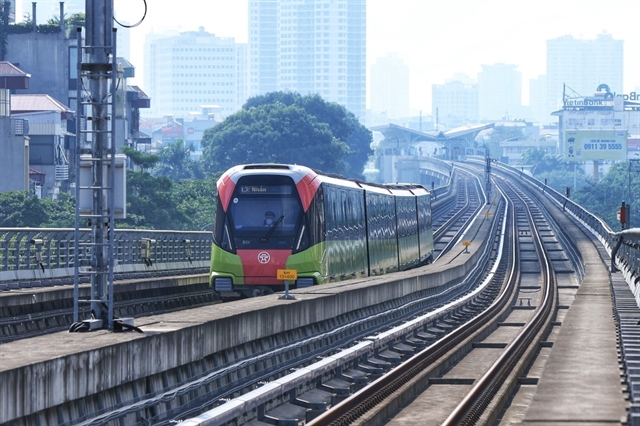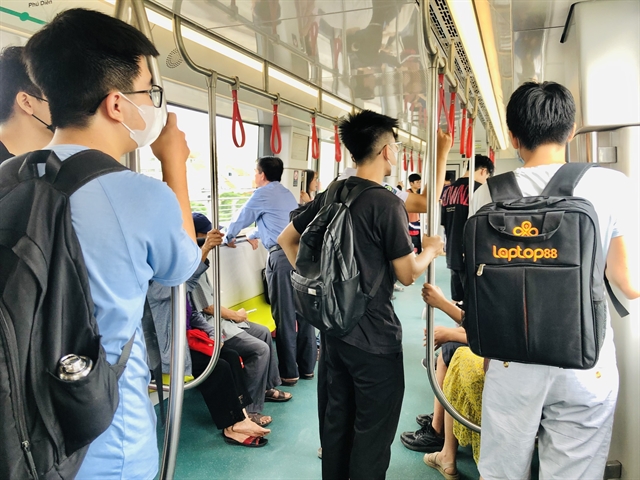Embracing the Transit-Oriented Development model for sustainable urban development
Society – Economy - Ngày đăng : 08:54, 03/11/2024
 |
| Train running on the elevated section of the Nhổn-Hà Nội Station metro line on the first day open to the public in August 2024. — VNA/VNS Photo Tuấn Anh |
Urban areas play a crucial role in services, industry, economic growth, and GDP. For sustainable urban development in major cities like Hà Nội and Hải Phòng, the goal should be green, civilised and modern. Lê Trung Hiếu, deputy director of the Hà Nội Planning and Investment Department, spoke to Vietnam News Agency about the potential of the TOD (Transit-Oriented Development) model to enhance infrastructure and transport systems.
Can you give us an overview of the TOD model and the benefits of implementing it in Hà Nội?
TOD is defined at various levels and scales, depending on the goals of the urban plan. It can be a strategy for urban development, promoting communities that are public transport-friendly, or a specific urban design approach.
Locally, TOD is typically seen as the integration of high-density urban areas with public transport, cycling and walking. It combines housing, retail spaces, and offices with pedestrian-friendly zones, making commuting and shopping more convenient.
Hà Nội is currently grappling with an imbalance between urban growth and transport infrastructure, leading to severe traffic congestion, increased pollution risks and wasted social resources.
The city now views TOD as a core solution for transport-focused urban development. This model revolves around urban planning and redevelopment, with urban rail systems at its centre. In essence, transport drives urban expansion.
By adopting TOD, Hà Nội seeks to boost land-use efficiency, improve public facilities, enhance community health, reduce reliance on private vehicles, cut emissions and strengthen connections between key areas.
 |
| Passengers on the elevated section of the Nhổn-Hà Nội urban railway line. Hà Nội now views TOD as a core solution for transport-focused urban development. — VNA/VNS Photo Tuyết Mai |
Do you believe TOD is the best solution for Hà Nội’s urban development?
One of the core principles of TOD is compact urban development. This approach ensures that essential services for daily life are within a short walking distance. In such cities, residents primarily walk to nearby destinations and rely on urban rail systems for longer journeys. With a well-developed urban rail network, Hà Nội can certainly be planned as a compact city.
However, the immediate challenge is that Hà Nội currently lacks the necessary legal framework to implement TOD planning and fully capitalise on land value in TOD zones. Establishing this legal framework is crucial for unlocking the full potential of TOD to reshape and develop the city.
The recently revised Capital Law, passed by the National Assembly, opens a new chapter for Hà Nội’s development. It outlines a legal framework for TOD, focusing on three key areas: urban planning, land accumulation, and capturing the added value of land. Special emphasis is placed on the latter, with significant investment dedicated to capturing this value.
Urban planning requires detailed data, including information on land use, population density, pedestrian and cyclist infrastructure, public spaces and the integration of various transport modes.
TOD zones will require specific regulations to allow for flexible land use, maximising land value. These zones should be permitted to apply unique criteria for planning, architecture and infrastructure that differ from national standards. Additionally, urban plans must be flexible, adapting over time to market trends and shifts in urban development needs.
Is maximising the added value of land a critical factor for the successful implementation of TOD?
Global experiences show that the early integration of urban planning and the acquisition of land for investment in urban rail systems and TOD areas are essential for the success of the TOD model. As such, it is vital to implement regulations, mechanisms, and policies for compensation, support, resettlement, and land recovery. These must ensure a harmonious balance of interests among residents, the state, and businesses to maximise land accumulation in TOD zones.
To effectively mobilise resources from land through the TOD model, we need a robust legal framework for planning and land use, governed by land law, planning law, and other relevant legislation. This framework should include specific provisions regarding the use of both underground and above-ground spaces, allowing for adjustments to land use ratios and building densities.
Establishing a legal framework to capture added land value in TOD areas is crucial. This can be achieved through mechanisms such as land auctions and tenders, alongside revenue from property taxes, land taxes and infrastructure improvement fees. Additionally, there should be a legal structure for TOD under public-private partnership (PPP) models, complemented by mechanisms for investing land in exchange for infrastructure, thereby enhancing capital generation from land.
To increase revenue from TOD, land use planning within these areas can be adjusted alongside hikes in various taxes and fees, including those from land auctions and tenders, state-funded infrastructure improvement fees and taxes on properties surrounding TOD zones. Future tax revenues and income from leasing underground spaces in TOD areas should also be considered.
Hà Nội is making cautious yet determined strides within an appropriate legal framework. There is ample reason to believe that our capital will successfully implement the TOD model and evolve into a modern, sustainable urban environment. VNS
